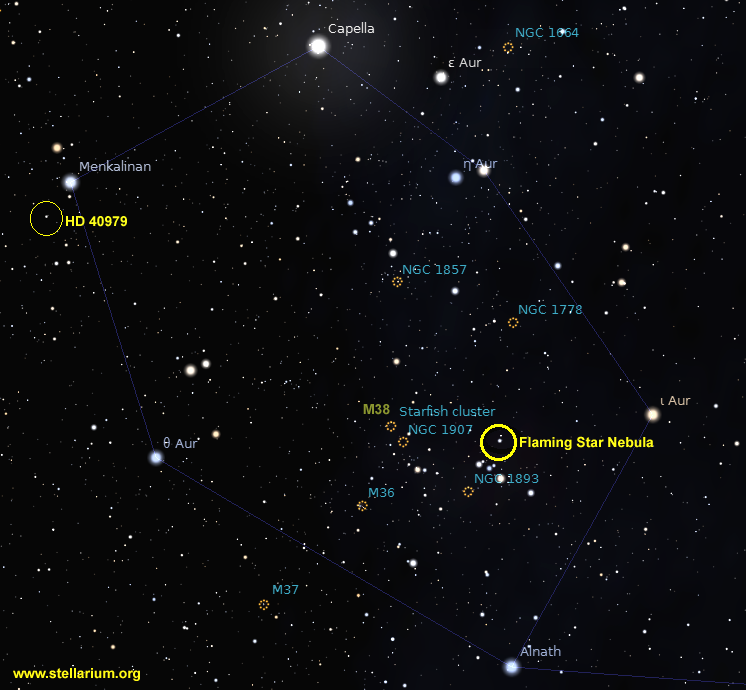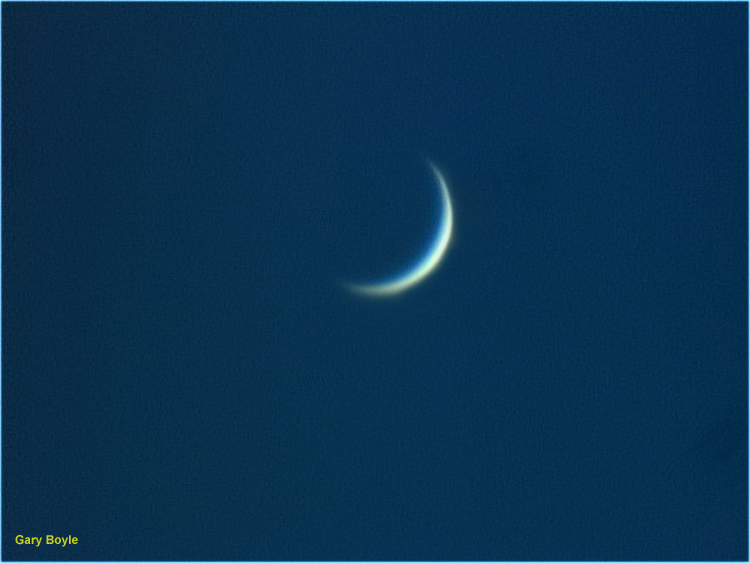Auriga
The star Capella is the most northern of the thirteen bright stars that help make up the winter sky. Referred to as the alpha star of the constellation Auriga, Capella brightly shines at magnitude zero and is the sixth brightest star in the night sky. Auriga is Latin meaning “charioteer” and consists of 657 square degrees of sky ranking it 21st in size. Capella is a yellow-white sun located 43 light-years away and possesses an extremely close companion which has been separated by the Hubble Space Telescope.
Almaaz (epsilon Aurigae) is a third magnitude star with a spectral class of F0 and is a supergiant measuring 135 times the diameter of the Sun. This star is an eclipsing binary system that ranges between magnitude 2.9 and 3.9. Well, that is the good news, the bad news is it eclipses for a duration of 20 months every 27 years with the last minimum occurred from 2009 to 2011. Almaaz is located 2,000 light-years from us.

Three lovely open clusters gather in the lower section of Auriga. The Milky Way also runs through this section and lends a perfect backdrop for photography. M37, M36 and M38 are lined up nicely and are a treat in any optical instrument. Of the three, M37 is the richest open cluster glowing at magnitude 6.2 and is nicknamed “the salt and pepper cluster”. It has an even distribution of suns and located 4,400 light-years away. M36 and M38 are about the same distance and but have fewer stars. M38 is a magnitude fainter. Including the Flaming Star Nebula when photographing there three clusters.
So far six exoplanets have been discovered within the boundaries of Auriga. They orbit the stars catalogued: HD 43691, WASP-12, HAT-P-9, HD 49674 and HD 45350. However, the brightest star of the group that can be seen with binoculars is HD 40979. Located near the star Menkalinan, this magnitude 6.7 star is the parent sun to a planet 3.3 times the mass of Jupiter. It was discovered in 2002 and has an orbital period of 263 days. HD 40979 is located 108 light-years from us.
As we approach the spring equinox on March 20 at 6:29 a.m. eastern, we have the last opportunity to witness and image the zodiacal light in the west an hour after sunset. March 14 starts the two-week window when moonlight will not interfere with seeing this narrow band of light. The zodiacal light is simply leftover interplanetary dust from the creation of the solar system. Spring and fall equinox allows us to see this dust reflecting sunlight the western show forming a slanted wedge of light angled to the ten o’clock position that ends below the Pleiades. Dark skies are a must.

Venus is really putting on a great show in the western sky. As it moves between the Earth and Sun, it is now sporting a fantastic crescent. On March 1st the illuminated phase is down to 18% and shrinks to a mere 8% by the 10th. Use caution after this date as Venus is getting closer to the Sun’s glare and dangerous to locate. Jupiter is well up in the east by 10 p.m. and dominates all night long. Be sure to follow the Galilean moons by referring to the RASC Observer’s Handbook 2017 page 232. Saturn is now up by 4 a.m.
The Messier Marathon is the challenge of seeing all 110 Messier objects in a single night. This is scheduled for the latter part of the March when dusk and dawn will not interfere when searching M74 and M30. With the new moon slated for the 27, the two weekends at your disposal are March 25/26 and April 1/2 with the first choice being best. The secret is to follow the list of Messier objects to maximize your search time. This month’s full Maple Syrup Moon occurs on the 12th.
